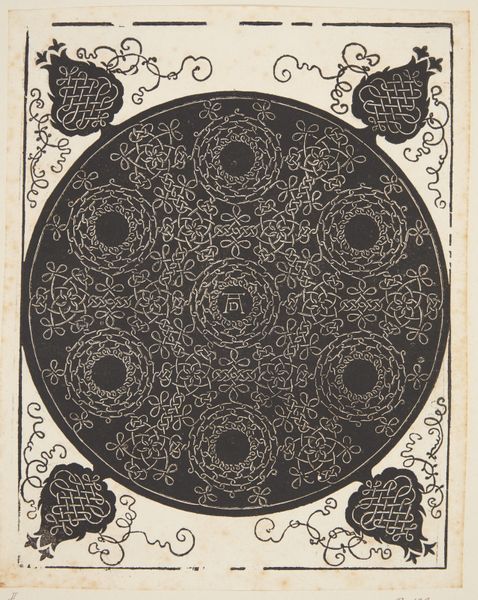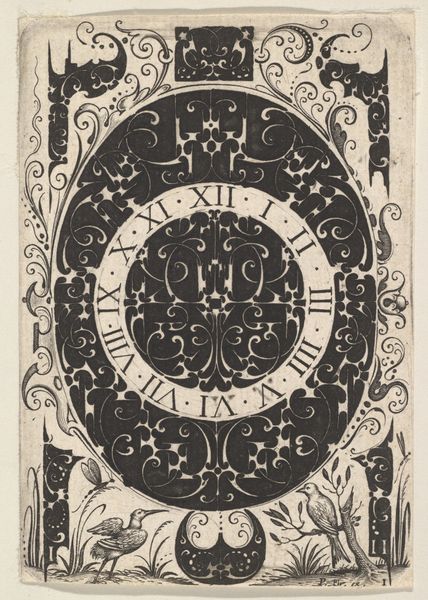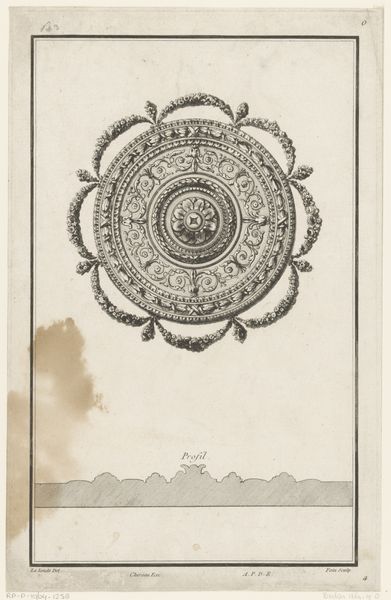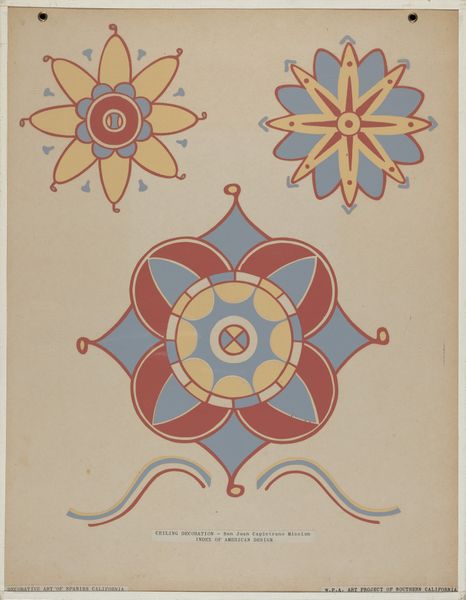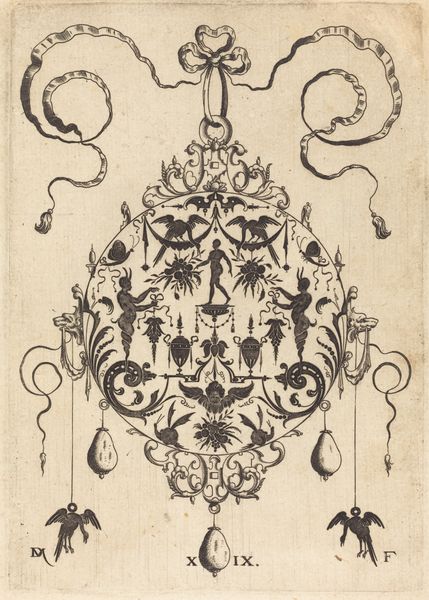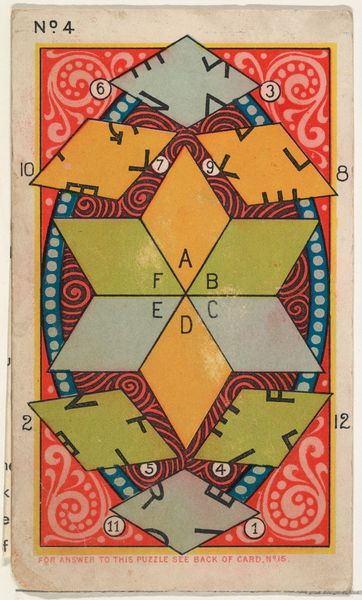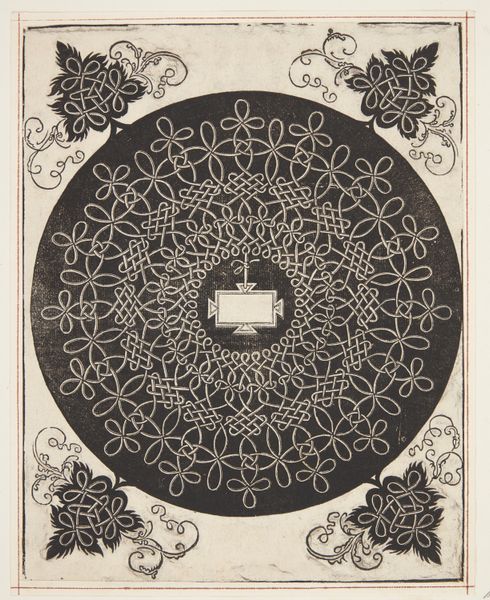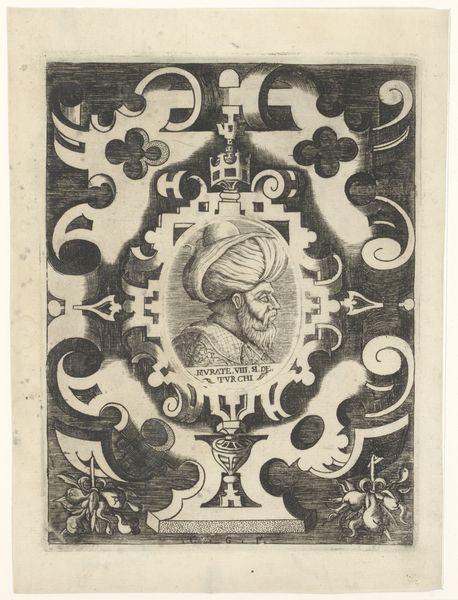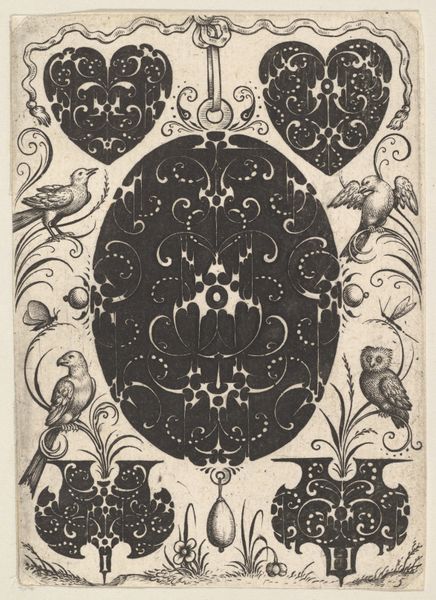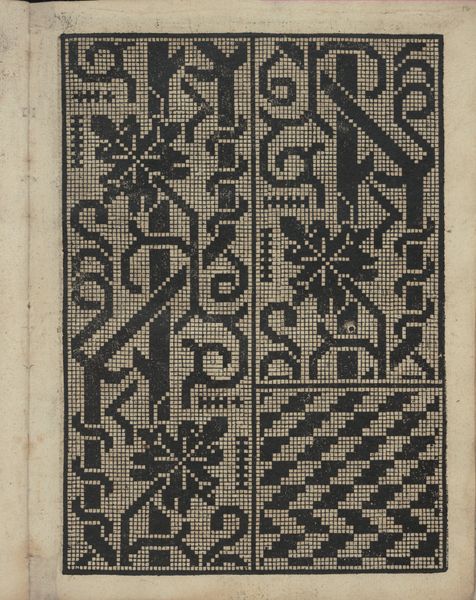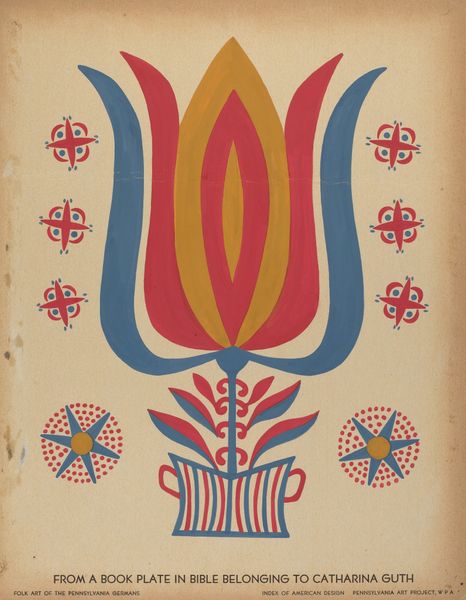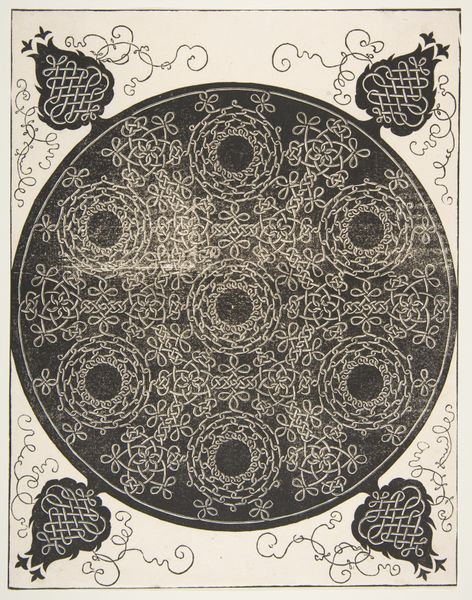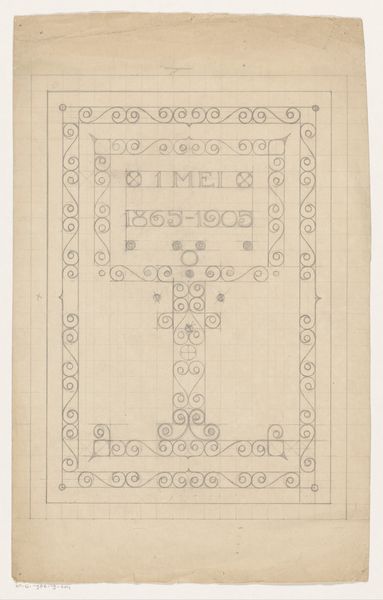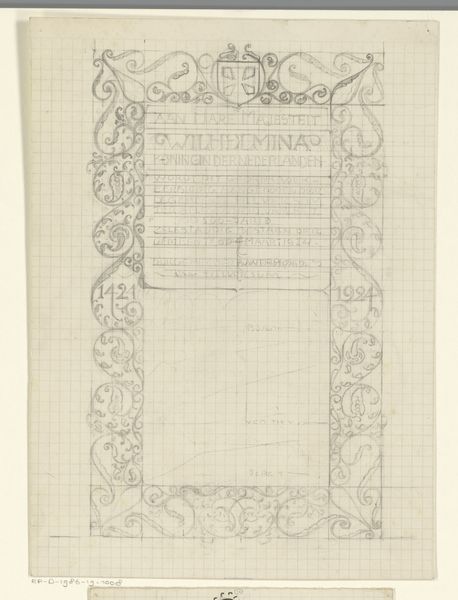
drawing, print, poster
#
drawing
#
art-nouveau
# print
#
flower
#
pattern repetition
#
textile design
#
decorative-art
#
poster
Dimensions: height 375 mm, width 241 mm
Copyright: Rijks Museum: Open Domain
Curator: This is Theo Nieuwenhuis's "Kalenderblad voor november 1896," or "Calendar Sheet for November 1896," created around 1895. It's a print, drawing, and poster all rolled into one lovely art nouveau package. Editor: It has a sort of end-of-season melancholy, don’t you think? A feeling of preparing for the cold months. The peach color palette also reminds me of wilting autumnal plants as everything dries out. Curator: Absolutely. This calendar exemplifies decorative art. Nieuwenhuis’s design showcases Art Nouveau’s emphasis on nature and integration with everyday objects, think wallpaper or textile design. This wasn't just art for art's sake. It was intended for practical use. You can also see examples of repetition through the flowers. Editor: Right, you almost don’t notice it's a calendar. It feels less about marking time, and more about appreciating a moment. The drawing technique, it's like the flowers have this incredible weight, but also this ephemeral, about-to-fade quality. Like they're ghosts of summers past, pressed onto paper for safekeeping. Curator: And that tension is fascinating, isn’t it? This particular print provides a lens into the commercial art world of the late 19th century, a world grappling with mass production and artistic identity. It raises questions about the role of the artist in a rapidly industrializing society, too. Editor: Plus, he makes something beautiful from a banal object. Each square is so lovingly decorated with tiny vegetal designs on the left-hand side and small details like shell forms throughout, transforming it into more than just a simple date planner. He elevates our mundane experience by using organic motifs. Curator: Nieuwenhuis aimed to bridge the gap between industrial production and handcrafted beauty. Editor: In the end, this piece reminds us that beauty exists even in the most functional objects, and it might only need the skilled hands of a dedicated maker. Curator: I agree. And considering the methods of reproduction, the social context makes it relevant and deeply impressive.
Comments
No comments
Be the first to comment and join the conversation on the ultimate creative platform.
